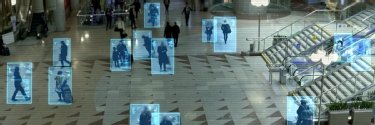News
-
 31 December 2025
31 December 2025
Top 10 police technology stories of 2025
-
 31 December 2025
31 December 2025
Top 10 business applications stories of 2025
-
 31 December 2025
31 December 2025
Top 10 surveillance, journalism and encryption stories of 2025
-
 31 December 2025
31 December 2025
Top 10 women in tech and diversity in tech stories of 2025
News Archive
-
December 31, 2025
31
Dec'25
Top 10 police technology stories of 2025
Here are Computer Weekly’s top 10 police technology stories of 2025
-
December 31, 2025
31
Dec'25
Top 10 business applications stories of 2025
There is no doubt what took centre stage in the theatre of business applications in 25: agentic AI, surpassing pre-2022 AI, and generative AI. C-level executives bang the AI drum while enterprises find value
-
December 31, 2025
31
Dec'25
Top 10 surveillance, journalism and encryption stories of 2025
A transatlantic row between the UK and the Trump administration erupted after the UK attempted to force Apple to break its advanced encryption. That was just one of a series of stories reporting on the tension between state surveillance and privacy ...
-
December 31, 2025
31
Dec'25
Top 10 women in tech and diversity in tech stories of 2025
As the year draws to a close, Computer Weekly looks over some of the notable stories relating to women in tech, diversity and inclusion over the past 12 months
-
December 30, 2025
30
Dec'25
Oldest victim of Post Office scandal awarded OBE in New Year Honours 2026
The New Year Honours List 2026 conferred an OBE on the oldest living victim of the Post Office scandal, as well as hailing members of the UK technology community
-
December 30, 2025
30
Dec'25
PwC: AI, cloud and next-generation networks redefine the Middle East’s TMT future
From sovereign cloud and AI compute to gaming and quantum, PwC research shows how the region is reshaping growth, competitiveness and digital sovereignty
-
December 30, 2025
30
Dec'25
Top 10 IT careers and skills stories of 2025
Looking back at the skills and hiring landscape in 2025, Computer Weekly shares key moments for IT careers and skills over the past 12 months
-
December 30, 2025
30
Dec'25
Top 10 information management stories of 2025
Artificial intelligence continued to have a big impact on information management in 2025. Also selected are case studies and interviews with data chiefs that show the enduring value of good data management
-
December 30, 2025
30
Dec'25
Top 10 government IT stories of 2025
The past 12 months has seen a number of significant milestones in digital government. Here are Computer Weekly’s top 10 government IT stories of 2025
-
December 30, 2025
30
Dec'25
Top 10 technology ethics stories of 2025
Here are Computer Weekly’s top 10 tech ethics stories of 2025
-
December 30, 2025
30
Dec'25
Top 10 European IT stories of 2025
Here are Computer Weekly’s top 10 European technology stories of 2025
-
December 29, 2025
29
Dec'25
Top 10 Post Office scandal stories of 2025
Here are Computer Weekly’s top 10 Post Office scandal stories of 2025
-
December 29, 2025
29
Dec'25
Top 10 cyber security stories of 2025
AI dominated all tech conversations this year, but the concerns of cyber security professionals extend far beyond. From remote work to supply chains, quantum to identity, there were plenty of other topics for the industry to chew over in 2025.
-
December 29, 2025
29
Dec'25
Top 10 NHS IT stories of 2025
A new digital strategy, funding boosts and struggles to keep the lights on: here are Computer Weekly’s top NHS IT stories in 2025
-
December 28, 2025
28
Dec'25
Middle East tech trends 2026: AI, cyber security and sovereign infrastructure take centre stage
As artificial intelligence moves from experimentation to production and cyber threats escalate, the Middle East is entering a decisive phase of digital transformation, says Omdia chief analyst Trevor Clarke
-
December 24, 2025
24
Dec'25
Top 10 India stories of 2025
From infrastructure expansion and sovereign AI innovation to regulatory maturity, Computer Weekly recaps the key developments that kept CIOs and technology suppliers across India busy in 2025
-
December 24, 2025
24
Dec'25
Top 10 networking stories of 2025
As enterprises become more extended, dealing with network complexity has become almost as important as network performance. The key to this is AI – but only if properly deployed. Discover more in Computer Weekly’s top 10 networking stories of 2025
-
December 24, 2025
24
Dec'25
Top 10 cyber crime stories of 2025
In many regards, 2025 proved to be a relatively normal year for the cyber security world as threat actors and security pros continued their long-running cat-and-mouse game, but it was also a stand-out year that saw some of the largest cyber attacks ...
-
December 24, 2025
24
Dec'25
Top 10 AI stories of 2025
No topic took over 2025 like that of artificial intelligence – whether it was DeepSeek, the discussion around computational resources, low return on investment, or the hype surrounding agentic AI. Here are Computer Weekly’s top 10 AI stories of 2025
-
December 23, 2025
23
Dec'25
UK government further expands rural 4G coverage through SRN
Over 100 mobile masts have been upgraded across rural Wales, Scotland and England, delivering 4G coverage from all mobile network operators for the first time as part of an ongoing development scheme
-
December 23, 2025
23
Dec'25
Aftermarket car telematics arena drives past 90 million subscriptions
Study of aftermarket car telematics finds growing value in technology for application areas including stolen vehicle tracking and recovery, vehicle diagnostics, Wi-Fi hotspots, convenience applications and usage-based insurance
-
December 23, 2025
23
Dec'25
Sama X to commence operations in Jordan with Starlink services
Regional tech venture aims to bridge connectivity gaps in industry, education, enterprise, government and humanitarian sectors in the Middle East and North Africa with regional roll-out
-
December 23, 2025
23
Dec'25
UAE and Dubai’s tech ambitions in focus as Sheikh Hamdan meets Elon Musk
High-level talks highlight AI, space, digital infrastructure and the UAE’s push to become a global technology and innovation hub through partnerships and progressive regulation
-
December 23, 2025
23
Dec'25
Top 10 telecoms stories of 2025
The telecoms market has delivered a wave of innovation over the course of the past 12 months, but in 2025 the sector shifted focus with eyes very much on the skies. Find out more in Computer Weekly’s top 10 telecoms stories of 2025
-
December 23, 2025
23
Dec'25
Top 10 financial services stories of 2025
AI and data breaches both caused major disruption in banking this year as the industry faced increased challenges and a seismic shift thanks to emerging tech. Find out more in Computer Weekly’s top 10 financial services stories of 2025
-
December 23, 2025
23
Dec'25
Top 10 ANZ stories of 2025
The 2025 tech landscape in Australia and New Zealand was dotted with major data breaches even as organisations continue to press on with their digital transformation efforts in areas such as AI and automation
-
December 23, 2025
23
Dec'25
Top 10 end user computing stories of 2025
The past year was dominated by news of Microsoft ending support for Windows 10, as well as the growing emergence of AI-capable PCs. Computer Weekly looks back at the top 10 end user computing stories of 2025
-
December 22, 2025
22
Dec'25
Top 10 ASEAN stories of 2025
Southeast Asia’s 2025 tech landscape saw financial institutions, healthcare researchers and government agencies moving decisively from technology pilots to large-scale AI deployments and infrastructure modernisation
-
December 22, 2025
22
Dec'25
Top 10 cloud computing stories of 2025
The influence of the hyperscale tech giants over the industry was a major topic this past year, but we also saw the emergence of a new type of cloud player in the form of neocloud. Here are Computer Weekly’s top 10 cloud computing stories of 2025
-
December 22, 2025
22
Dec'25
Top 10 datacentre stories of 2025
It’s been a busy year for datacentre news, with the UK government’s ambitions to expand AI growth zones, along with controversies surrounding the effect of these plans on the environment. Here are Computer Weekly’s top 10 datacentre stories of 2025
-
December 22, 2025
22
Dec'25
Top 10 IT leadership interviews of 2025
The top digital, data and technology leaders talk to Computer Weekly to discuss the challenges they face and the strategies, solutions and successes they are delivering
-
December 19, 2025
19
Dec'25
European Commission renews UK data adequacy agreement, ensuring continued free flow of data
Despite calls from some data protection campaigners, the UK's agreement to allow data movement with European Economic Area countries is extended until 2031
-
December 19, 2025
19
Dec'25
Digital Twin Consortium opens doors on four new testbeds
Testbeds accelerate the development and deployment of next-generation digital twin technologies across industries including manufacturing, medicine, aerospace and defence
-
December 19, 2025
19
Dec'25
‘Sensitive’ data stolen in Westminster City Council cyber attack
London borough confirms that data breach affecting three neighbouring councils in a shared IT services operation led to personal information being copied by a third party
-
December 19, 2025
19
Dec'25
BT: UK’s next phase of quantum progress hinges on network build
UK’s leading network provider reflects on the country’s quantum progress to date, and proposes what needs to happen next as funding and focus shift towards delivery
-
December 19, 2025
19
Dec'25
Kodiak AI looks to transform trucking with autonomous tech, IoT connectivity
5G telematics and ThingSpace IoT management services enable autonomous vehicle technology operating model and manage massive amounts of data generated from its driverless trucks
-
December 19, 2025
19
Dec'25
UK government confirms Foreign Office cyber attack
Reports blame Chinese hacking group but minister insists the source of the attack is unclear
-
December 19, 2025
19
Dec'25
UK mobile improves but digital divides persist
Mobile network analyst finds UK-wide median mobile download speed rose 15% year-on-year to 63.03Mbps in 2025, while upload speeds improved from 7.80 to 8.21Mbps
-
December 19, 2025
19
Dec'25
Government set for early 2026 court hearing over decision to approve Iver datacentre development
A court date has been assigned for a legal action being brought against the government over its decision to grant planning permission for a datacentre in Iver
-
December 18, 2025
18
Dec'25
Virgin Media O2 reveals record-breaking year of UK data use
UK operator releases data exploring how British people lived online in 2025, finding record-levels of data consumption including a rise in both broadband usage and mobile traffic
-
December 18, 2025
18
Dec'25
Post Office six years late to warn subpostmasters about Horizon defect
Following pressure from Computer Weekly and forensic investigator, the Post Office has warned subpostmasters about Horizon defect potentially at large for over 20 years
-
December 18, 2025
18
Dec'25
The AI regulation gap: Is the UK’s pro-innovation approach enough?
As AI advances, the UK’s pro-innovation regulatory stance faces growing scrutiny. With non-statutory principles at its core, can the framework maintain public trust and provide effective oversight?
-
December 18, 2025
18
Dec'25
Fortinet vulnerabilities prompt pre-holiday warnings
Analysts track exploitation of two vulnerabilities disclosed last week by Fortinet
-
December 18, 2025
18
Dec'25
Freshwave, O2 enhance mobile connectivity for Guildford
Neutral host provider teams with leading UK comms operator and Surrey County Council to deliver 13 4G/5G outdoor small cells to country’s largest conurbation, with nine already live
-
December 18, 2025
18
Dec'25
GCC operators line up behind 10GIGA vision as 5G-Advanced moves from trials to scale
Industry leaders say spectrum clarity, AI-native networks and ecosystem coordination will define the next phase of ultra-wideband connectivity and lay the foundations for future 6G services
-
December 18, 2025
18
Dec'25
MHRA seeks views on healthcare AI regulation
Medicines and Healthcare products Regulatory Agency (MHRA) wants to know how to regulate AI technologies in the NHS while keeping patients safe
-
December 18, 2025
18
Dec'25
Saudia Arabia’s STC commits to five-year network upgrade programme with Ericsson
Five-year framework agreement focuses on cloud-native networks, AI-driven operations and advanced 5G capabilities as the operator aligns infrastructure investment with Vision 2030 goals
-
December 18, 2025
18
Dec'25
From Kuwait to Brazil: Inside the network behind real-time robotic surgery
Zain Omantel International and Zain Kuwait deliver ultra-low latency network enabling live telesurgery between Kuwait and Brazil, highlighting the role of advanced connectivity in digital healthcare transformation
-
December 18, 2025
18
Dec'25
AI safeguards improving, says UK government-backed body
Inaugural AI Security Institute report claims that safeguards in place to ensure AI models behave as intended seem to be improving
-
December 17, 2025
17
Dec'25
Jilted Fujitsu replaced by Netcompany in HMRC relationship
Troubled Fujitsu replaced by Netcompany on trading service as HMRC begins to move its outsourcing away from scandal-hit firm


